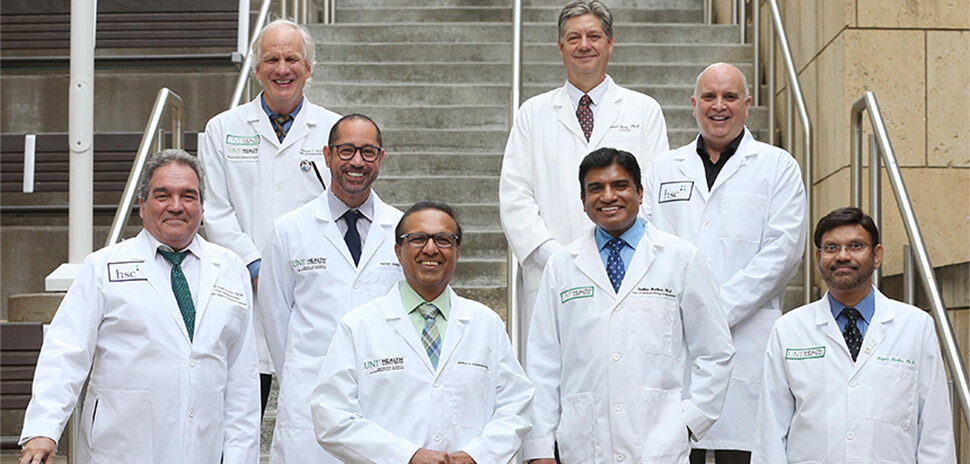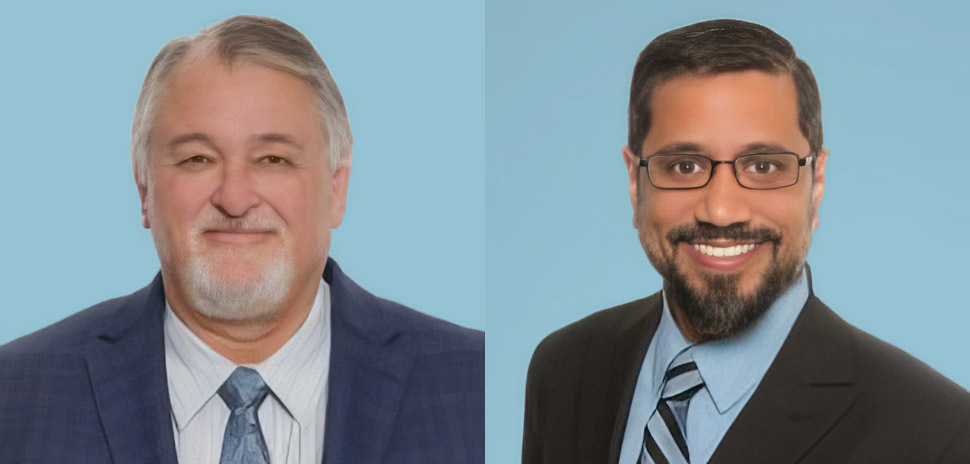Fort Worth’s University of North Texas Health Science Center has today announced a $7 million investment to research why African Americans are at a greater biological risk of Alzheimer’s disease. Long-term, the goal is to develop new treatments that can prevent the deadly disease.
With the capital, 1,000 North Texas-based African Americans over 50 will be recruited to participate in HSC’s HABLE (The Health and Aging Brain among Latino Elders) study.
HABLE is a five-year project created by Sid O’Bryant, professor and executive director of the HSC Institute for Translational Research in 2017 with a $12 million National Institutes of Health grant. It is now co-led by O’Bryant and Leigh Johnson, associate professor and associate director of the institute.
In September, Dr. O’Bryant and Dr. Johnson received $45 million from the National Institute on Aging to expand their research into Alzheimer’s disease and how it affects Mexican Americans.
The new investment builds on that—and means African Americans will join Mexican Americans and non-Latino Whites in the HABLE study.
“This significant investment allows us to incorporate African Americans into HSC’s ground-breaking research into Alzheimer’s, a disease that has long disproportionally impacted the African American community,” HSC President Dr. Michael Williams said in a statement. “HSC is proud to lead the way in discovering new interventions that could transform how we prevent and treat Alzheimer’s disease in the future.”
According to the U.S. Center for Disease Control and Prevention, African Americans have the highest prevalence of Alzheimer’s disease among people 65 and older. Hispanics and non-Latino whites follow.
But, as HSC points out, most Alzheimer’s research focuses on non-Latino whites.
The health science center wants to close this ethnic gap in research. In an announcement, HSC said the new investment aligns with its commitment to confront racism as a public health emergency and reduce racial health disparities.
“Improving the health and well-being of people living in Fort Worth’s most vulnerable communities is a mission that I am proud to share with the Health Science Center,” Tarrant County Commissioner Roy C. Brooks said in a statement. “Alzheimer’s disease is just one of many health disparities that disproportionately impacts African Americans, and I encourage those who qualify to take advantage of this tremendous opportunity.”
Behind the HABLE study
Now, the study will take a comprehensive look at how different biological causes relate to Alzheimer’s disease across ethnicities. And, the cohort of participants will grow to 3,000.
African American HABLE study participants will join around 1,000 Mexican Americans and 1,000 non-Latino whites over 50 from North Texas who have enrolled.
Each participant will receive free comprehensive interviews, functional exams, clinical laboratory tests, a brain MRI and PET Scan, and more. The scans will be conducted from the a state-of-the-art imaging center that HSC created for the Institute for Translational Research, meaning that participants won’t have to be referred to private imaging centers for the costly scans.
It’s a capability that very few research laboratories in the country have, Dr. O’Bryant says.
The research team will conduct two PET Scans on each participant to search for beta amyloid or tau proteins, which they say are biomarkers for Alzheimer’s. Two more PET Scans will be performed two years later to compare how the proteins progressed.
They can also observe differences between ethnicities. Preliminary data suggests that beta amyloid protein differs significantly in prevalence between Mexican Americans and non-Latino whites, according to Dr. O’Bryant.
And the benefits are two-fold for both the researchers and patient: Participants can request that medical exam results be shared with their healthcare providers to assist with current or future decisions.
“The significant expansion will allow us to understand how medical conditions like diabetes and hypertension, which are both more prevalent in African Americans and Mexican Americans communities, are associated with Alzheimer’s disease,” Dr. O’Bryant said. “In addition to medical risk factors, we can look at how socioeconomic status and sociocultural and environmental factors also impact this disease.”
Disparities in medical research
According to Rear Admiral (ret) Dr. Sylvia Trent-Adams, there has been a long, significant challenge in creating solutions to reduce health disparities. Dr. Trent-Adams, HSC’s chief strategy officer, attributes this to a lack of participation from minorities in medical research.
“African Americans, for example, have historically held a deep mistrust of medical institutions and the health care system,” Dr. Trent-Adams, who is also the former acting U.S. surgeon general, said. “HSC is proud to lead the way in breaking down these barriers and building a relationship of trust.”
The researchers consider North Texas to be reflective of the future U.S. racial and ethnic population. They say it was an ideal location to conduct a study that includes African Americans, Mexican Americans, and non-Hispanic whites.
The HABLE study represents hope, says Lillie Biggins, retired president of Texas Health Harris Methodist Hospital Fort Worth. She sees it as a sign that “science can one day detect Alzheimer’s much sooner and discover new, more effective treatments.”
“It is an extraordinary opportunity for Fort Worth and North Texas, and I invite the community to join me in supporting this important research,” Biggins said.
![]()
Get on the list.
Dallas Innovates, every day.
Sign up to keep your eye on what’s new and next in Dallas-Fort Worth, every day.














![Erica Kosemund, Chief Brand Officer, Choctaw Nation of Oklahoma; Gillian Breidenbach, Chief Partnership Officer, North Texas FWC Organizing Committee; Chief Gary Batton, Chief of Choctaw Nation of Oklahoma; Monica Paul, Executive Director of Dallas Sports Commission and President of North Texas FWC Organizing Committee; John Hobbs, Senior Executive Officer of Communications, Choctaw Nation of Oklahoma; and Heidi Grant, Senior Executive Officer of Commerce Administration, Choctaw Nation of Oklahoma, celebrate Choctaw Casinos & Resorts becoming an Official Dallas World Cup 2026 Host City Supporter. [Photo: North Texas FWC Organizing Committee/Choctaw Casinos & Resorts]](https://s24806.pcdn.co/wp-content/uploads/2025/12/FIFA-Choctaw-dec-2025.jpg)


















